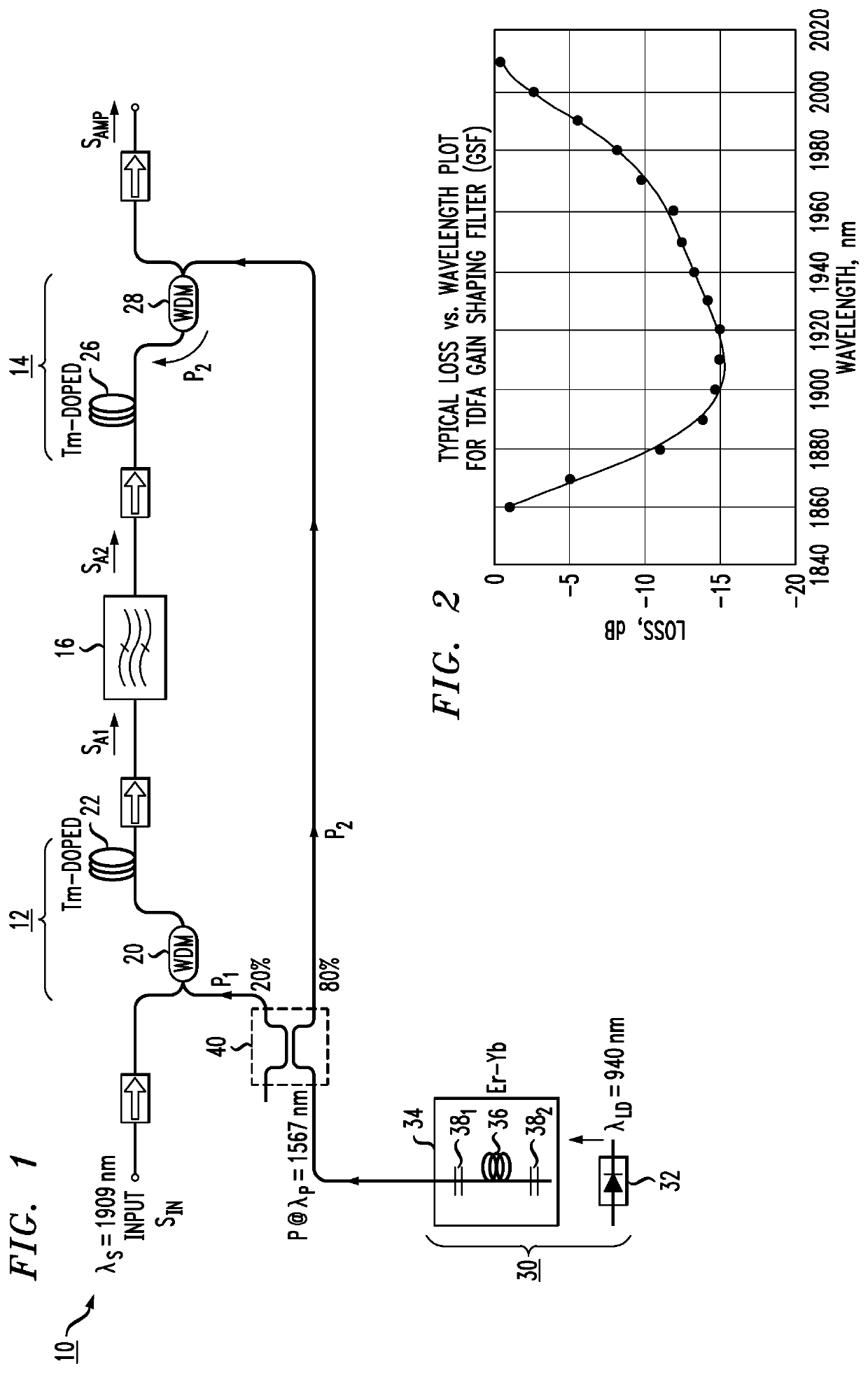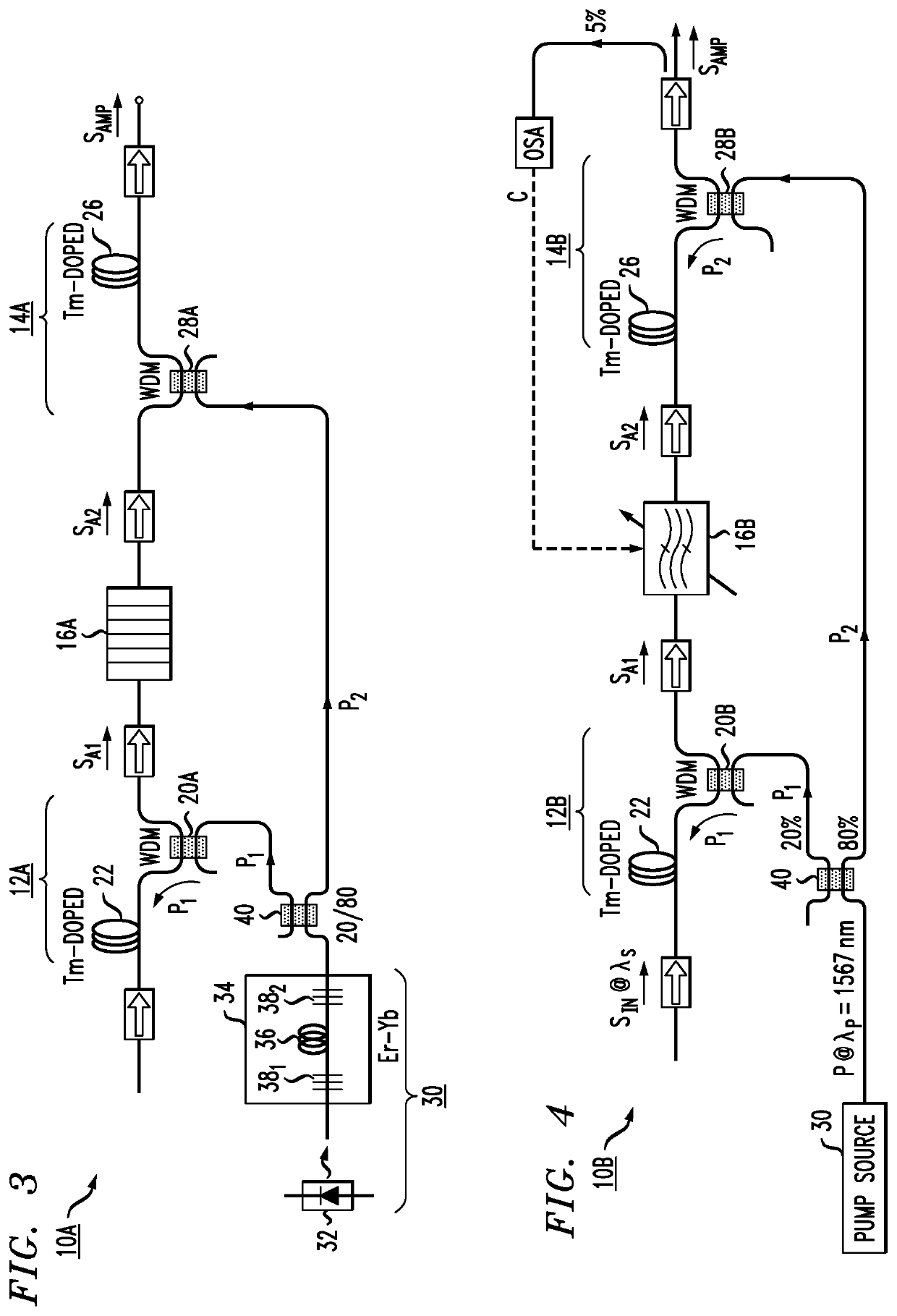Tm-doped fiber amplifier utilizing wavelength conditioning for broadband performance
a fiber amplifier and wavelength conditioning technology, applied in the direction of laser details, active medium materials, active medium shape and construction, etc., can solve the problem of limited useful bandwidth of the overall spectral response of the amplifier, and achieve the effect of flattening the gain profile and output power distribution, and extending the operating bandwidth of the amplifier
- Summary
- Abstract
- Description
- Claims
- Application Information
AI Technical Summary
Benefits of technology
Problems solved by technology
Method used
Image
Examples
Embodiment Construction
[0025]Recent developments in various types of optical-based applications have created the need for optical systems that operate in the eye-safe wavelength band of 1.9-2.1 μm. One need is for an optical amplifier that is able to impart an appreciable level of gain to input signals across a relatively wide wavelength region within this eye-safe band. Most applications require an amplifier that provides a uniform (i.e., “flat”) gain profile and output power distribution over the wavelength range of interest.
[0026]FIG. 1 contains a block diagram of an exemplary Tm-doped fiber amplifier (TDFA) 10 formed in accordance with the principles of the present invention. TDFA 10 is based upon the use of single-clad optical gain fiber in combination with a wavelength conditioning element that is configured to reduce nonuniform gain / emission in the spectral response of the amplifier (i.e., to flatten the gain profile and output power distribution of the amplifier). By performing this function, the ...
PUM
| Property | Measurement | Unit |
|---|---|---|
| wavelength | aaaaa | aaaaa |
| wavelength region | aaaaa | aaaaa |
| wavelengths | aaaaa | aaaaa |
Abstract
Description
Claims
Application Information
 Login to View More
Login to View More - R&D
- Intellectual Property
- Life Sciences
- Materials
- Tech Scout
- Unparalleled Data Quality
- Higher Quality Content
- 60% Fewer Hallucinations
Browse by: Latest US Patents, China's latest patents, Technical Efficacy Thesaurus, Application Domain, Technology Topic, Popular Technical Reports.
© 2025 PatSnap. All rights reserved.Legal|Privacy policy|Modern Slavery Act Transparency Statement|Sitemap|About US| Contact US: help@patsnap.com



